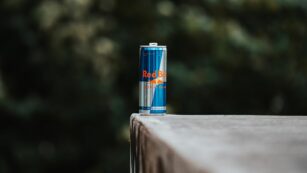Cracking the code of Red Bull’s marketing strategy can feel like trying to catch a lightning bolt. With their daring stunts and high-octane events, they’ve managed to create a brand that’s synonymous with extreme sports and adrenaline-pumping action. But there’s more to their success than just heart-stopping thrills.
Red Bull Marketing
Early Strategies and Branding
 In the inception stages, Red Bull focused on gaining a market position through innovative strategies and memorable branding. Their primary target? The young, energetic crowd drawn to extreme sports and adventurous lifestyle. For instance, Red Bull collaborated with sports associations, such as those dedicated to mountain biking or snowboarding, to immerse themselves into the culture they aimed to appeal to.
In the inception stages, Red Bull focused on gaining a market position through innovative strategies and memorable branding. Their primary target? The young, energetic crowd drawn to extreme sports and adventurous lifestyle. For instance, Red Bull collaborated with sports associations, such as those dedicated to mountain biking or snowboarding, to immerse themselves into the culture they aimed to appeal to.
A distinctive feature of Red Bull marketing rested on cultivating exclusivity. Instead of stocking Red Bull beverages at every corner store, the company launched its energy drink only in selected bars and clubs, creating a buzz about its unique taste and invigorating effects.
Furthermore, they developed the iconic Red Bull logo – two bulls charging towards each other against a sun backdrop. This emblem garnered instant recognition, reinforcing the brand’s message of energy, power, and adrenaline.
Expansion and Global Reach
As Red Bull established a strong brand identity, it sought to extend its global reach with strategic expansion tactics. A prime illustration of this effort is Red Bull’s “Flugtag” event encouraging inventors to create and pilot homemade flying machines. The first Flugtag took place in Vienna, Austria, but soon, the competition spread to cities around the globe, from Tokyo to San Francisco.
 Seeing the substantial potential in brand dissemination through digital channels, Red Bull was early to leverage online marketing. They created a digital media company producing high-quality content such as videos of daredevil stunts and extreme sports, published from Red Bull’s own websites and YouTube channel.
Seeing the substantial potential in brand dissemination through digital channels, Red Bull was early to leverage online marketing. They created a digital media company producing high-quality content such as videos of daredevil stunts and extreme sports, published from Red Bull’s own websites and YouTube channel.
Finally, Red Bull formed partnerships with existing global events, like Formula 1 and Music festivals, aligning themselves with a broader range of lifestyle segments.
Key Components of Red Bull’s Marketing Strategy
Red Bull’s marketing strategy has led to their dominance in the global beverage market. The strategies encompass a blend of unconventional marketing tactics and consistent brand messaging. A meticulous evaluation of these approaches reveals two crucial aspects: event sponsorship tied to extreme sports, and innovative advertising techniques.
Event Sponsorship and Extreme Sports
A key propeller of Red Bull’s marketing strategy hinges on event sponsorship, often inextricably linked to extreme sports. Red Bull plows significant investment into events like downhill ice skating, cliff diving, and motocross, resonating with their target demographic’s penchant for adrenaline.
Take, for instance, Red Bull’s Flugtag event. Here, participants create home-made, human-powered flying machines that inevitably plunge into a body of water. Overseeing such unconventional events has forged a tangible connection with Red Bull’s consumers, who often exert high energy levels and live on-the-edge lifestyles. Sports like these align perfectly with the brand’s domineering slogan, “Red Bull Gives You Wings.”
Innovative Advertising Techniques
 Alongside sponsorship, Red Bull leads a unique path in advertising techniques. The approach is built around delivering high-quality, compelling content relevant to their audience – a stark contrast to many competitors reliant on traditional product-focused advertisements.
Alongside sponsorship, Red Bull leads a unique path in advertising techniques. The approach is built around delivering high-quality, compelling content relevant to their audience – a stark contrast to many competitors reliant on traditional product-focused advertisements.
One standout example lies in Red Bull’s Stratos project. Here, Austrian skydiver Felix Baumgartner made a freefall jump from the stratosphere, breaking several world records. Beyond compelling global attention, it showcased Red Bull’s identity as a purveyor of extreme, boundary-pushing moments, cleverly integrated into the brands’ content output. In doing so, Red Bull surreptitiously illustrates the correlation between its energy drink consumption and accomplishing daring feats.
Impact of Social Media on Red Bull Marketing
Social media significantly influences Red Bull’s marketing efforts. The brand maintains a strong presence across various social platforms. Revamping traditional forms of communication, Red Bull leverages social media channels to engage with its youthful, adventure-seeking demographic. In addition, the company consistently generates quality content for its channels. Containing extreme sports footages, digital comics, and music playlists, this range of content mirrors Red Bull’s brand essence. Consequently, Red Bull’s social media strategy offers a glimpse into its overall marketing success.

